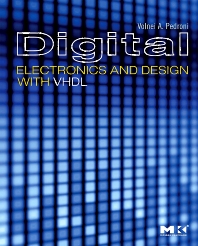Books in Electronic design automation
Books in Electronic design automation

Complete PCB Design Using OrCAD Capture and PCB Editor
- 2nd Edition
- Kraig Mitzner + 4 more
- English

Three-Dimensional Integrated Circuit Design
- 2nd Edition
- Vasilis F. Pavlidis + 2 more
- English

Ecological Design of Smart Home Networks
- 1st Edition
- N. Saito + 1 more
- English

Analog Design and Simulation using OrCAD Capture and PSpice
- 1st Edition
- Dennis Fitzpatrick
- English

Electronic Design Automation
- 1st Edition
- Laung-Terng Wang + 2 more
- English

The Designer's Guide to VHDL
- 3rd Edition
- Volume 3
- Peter J. Ashenden
- English

Digital Electronics and Design with VHDL
- 1st Edition
- Volnei A. Pedroni
- English

VHDL-2008
- 1st Edition
- Peter J. Ashenden + 1 more
- English

Digital Design (VHDL)
- 1st Edition
- Peter J. Ashenden
- English

System Level Design with Rosetta
- 1st Edition
- Perry Alexander
- English